Enclosure IP Ratings - IP54 IP55 IP65 IP66 IP67 IP68 - Complete Guide
IP ratings, or Ingress Protection ratings, are standards set by the International Electrotechnical Commission (IEC) to define the levels of sealing effectiveness of electrical or electronics enclosures against intrusion from foreign bodies (like dust and dirt) and moisture. These ratings help users understand how well an enclosure can protect the internal components from external factors.
When choosing a plastic enclosure for your electrical or electronics equipment, understanding IP ratings is most important.
This guide will explain the different IP ratings and help you pick the best plastic enclosure for your needs.
What Are IP Ratings?
Enclosure IP Ratings, or Ingress Protection ratings, are standards set by the International Electrotechnical Commission (IEC) to define the levels of sealing effectiveness of electrical enclosures against intrusion from foreign bodies (like dust and dirt) and moisture. These ratings help users understand how well an enclosure can protect the internal components from environmental factors. IP ratings are composed of two digits, each representing a specific type of protections:
How to understand Enclosure IP Rating nomenclatures?

Enclosure IP ratings are composed of two digits, each representing a specific type of protection:
First Digit (Solids Protection): Ranges from 0 to 6
- 0: No protection against contact and ingress of objects.
- 1: Protection against solid objects larger than 50 mm (e.g., accidental hand contact).
- 2: Protection against solid objects larger than 12.5 mm (e.g., fingers or similar objects).
- 3: Protection against solid objects larger than 2.5 mm (e.g., tools, thick wires).
- 4: Protection against solid objects larger than 1 mm (e.g., most wires, screws).
- 5: Dust-protected; limited ingress of dust is permitted but must not interfere with the operation of the equipment.
- 6: Dust-tight; complete protection against dust.
Second Digit (Liquid Protection): Ranges from 0 to 9
- 0: No protection against water.
- 1: Protection against vertically falling water droplets (e.g., condensation).
- 2: Protection against vertically falling water droplets when the enclosure is tilted up to 15 degrees.
- 3: Protection against spraying water at an angle up to 60 degrees.
- 4: Protection against water splashing from any direction.
- 5: Protection against low-pressure water jets from any direction.
- 6: Protection against high-pressure water jets from any direction.
- 7: Protection against immersion in water up to 1 meter for 30 minutes.
- 8: Protection against continuous immersion in water under conditions specified by the manufacturer (usually beyond 1 meter).
- 9: Protection against high-pressure, high-temperature water jets (very high-end protection not commonly used for typical enclosures).
Most Common IP Ratings for Plastic Enclosures
Althought there are many Enclosure IP ratings in the world, but here we are explaining only widely useful Enclosure IP Ratings.
1) IP54 Plastic Enclosures
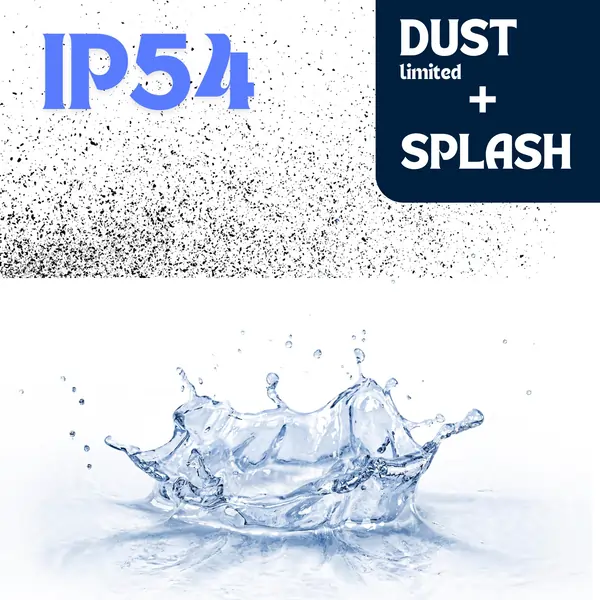
Protection of IP54 Ratings:
- Solid objects and dust: 5 – Protection against limited dust ingress.
- Water: 4 – Protection against water splashes from any direction.
Testing Methods:
- Dust Test: Enclosures are exposed to a limited amount of dust for 8 hours. The dust should not penetrate in sufficient quantity to interfere with the satisfactory operation of the equipment.
- Water Test: Enclosures are subjected to water splashes from any direction at a rate of 10 liters per minute for at least 5 minutes.
Usage:
IP54 plastic enclosures are suitable for indoor and outdoor applications where equipment needs protection from dust and water splashes, such as in general electronics and junction boxes.
2) IP55 Plastic Enclosures
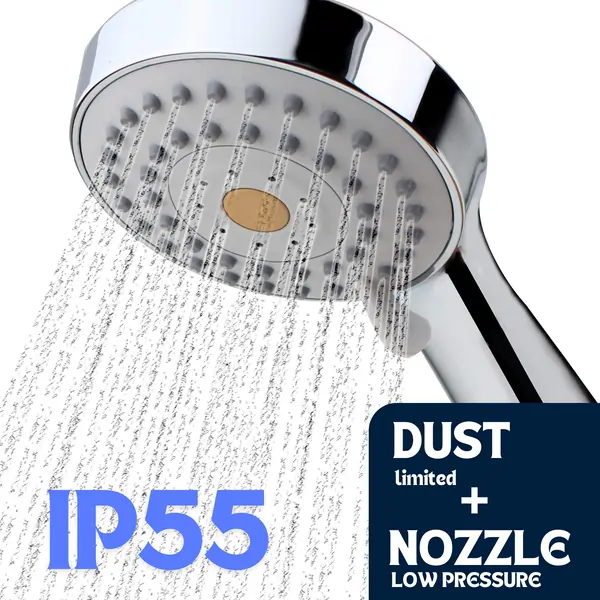
Protection of IP55 Ratings:
- Solid objects and dust: 5 – Protection against limited dust ingress.
- Water: 5 – Protection against low-pressure water jets from any direction.
Testing Methods:
- Dust Test: Enclosures are exposed to a limited amount of dust for 8 hours. The dust should not penetrate in sufficient quantity to interfere with the satisfactory operation of the equipment.
- Water Test: Enclosures are subjected to water jets from a 6.3mm nozzle at a flow rate of 12.5 liters per minute for at least 3 minutes from a distance of 3 meters.
Usage:
IP55 plastic enclosures are ideal for environments where equipment needs protection from dust and low-pressure water jets, such as in industrial controls and outdoor electrical applications.
3) IP65 Plastic Enclosures

Protection of IP65 Ratings:
- Solid objects and dust: Complete protection against dust ingress.
- Water: 5 – Protection against low-pressure water jets from any direction.
Testing Methods:
- Dust Test: Enclosures are placed in a chamber filled with circulating talcum powder for 8 hours. The enclosure is vacuum-sealed to ensure no dust enters.
- Water Test: Enclosures are subjected to water jets from a 6.3mm nozzle at a flow rate of 12.5 liters per minute for at least 3 minutes from a distance of 3 meters.
Usage:
IP65 plastic enclosures are ideal for outdoor applications where equipment needs protection from dust and occasional water exposure, such as in signage, control panels, and lighting.
4) IP66 Plastic Enclosures
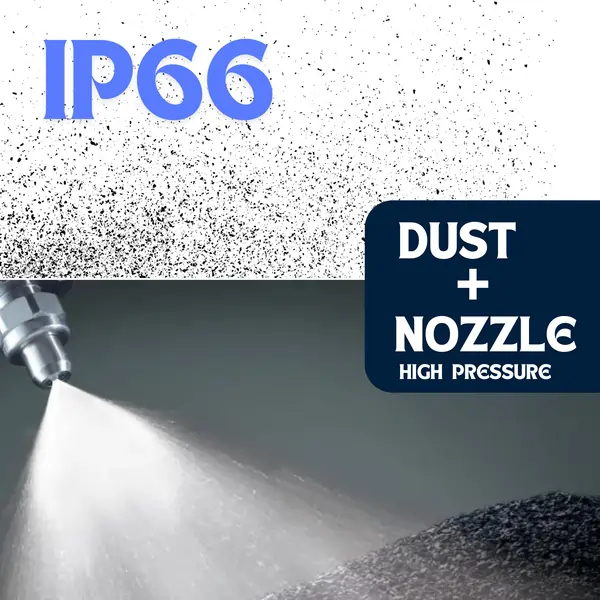
Protection of IP66 Ratings:
- Solid objects and dust: 6 – Complete protection against dust ingress.
- Water: 6 – Protection against High pressure water jets from any direction.
Testing Methods:
- Dust Test: Enclosures are placed in a chamber filled with circulating talcum powder for 8 hours. The enclosure is vacuum-sealed to ensure no dust enters.
- Water Test: Enclosures are subjected to water jets from a 6.3mm nozzle at a flow rate of 12.5 liters per minute for at least 3 minutes from a distance of 3 meters.
Usage:
IP66 plastic enclosures are suitable for harsh environments where equipment might be exposed to powerful water jets and dust, such as in industrial machinery, marine applications, and outdoor electrical installations.
5) IP67 Plastic Enclosures
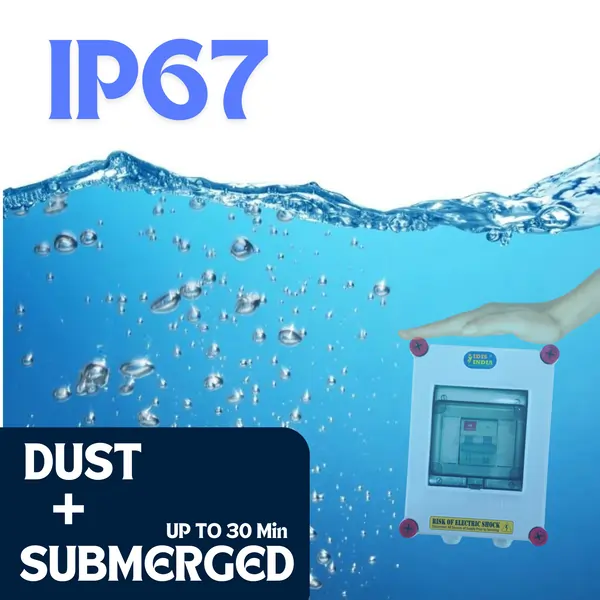
Protection of IP67 Ratings:
- Solid objects and dust: 6 – Complete protection against dust ingress.
- Water: 7 – Protection against immersion in water up to 1 meter for 30 minutes.
Testing Methods:
- Dust Test: Enclosures are placed in a chamber filled with circulating talcum powder for 8 hours. The enclosure is vacuum-sealed to ensure no dust enters.
- Water Test: Enclosures are submerged in water to a depth of 1 meter for 30 minutes.
Usage:
IP67 plastic enclosures are perfect for environments where equipment could be temporarily submerged in water, like in certain underwater applications, outdoor surveillance systems, and portable devices.
6) IP68 Plastic Enclosures
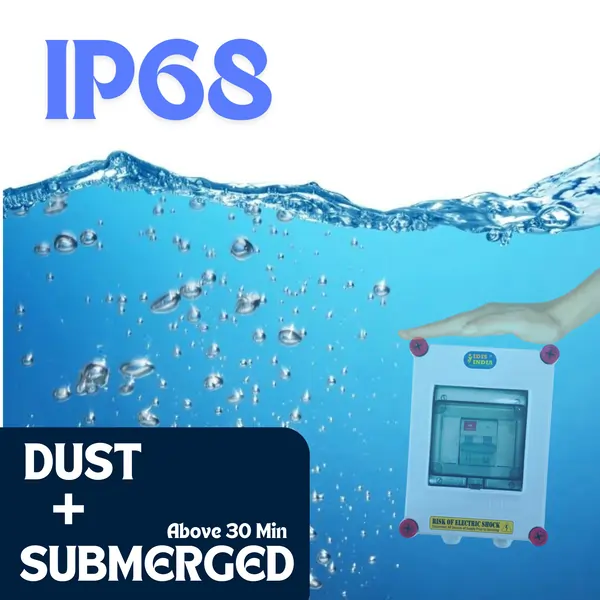
Protection of IP68 Ratings:
- Solid objects and dust: 6 – Complete protection against dust ingress.
- Water: 8 – Protection against immersion in water above 1 meter for more than 30 minutes.
Testing Methods:
- Dust Test: Enclosures are placed in a chamber filled with circulating talcum powder for 8 hours. The enclosure is vacuum-sealed to ensure no dust enters.
- Water Test: Enclosures are submerged in water above depth of 1 meter for more than 30 minutes. Often depth is 1 to 3 meters and time for several hours depending on the agreed conditions or intended applications.
Usage:
Great for deep underwater use or places with extreme conditions, like underwater sensors, swimming pools, etc.
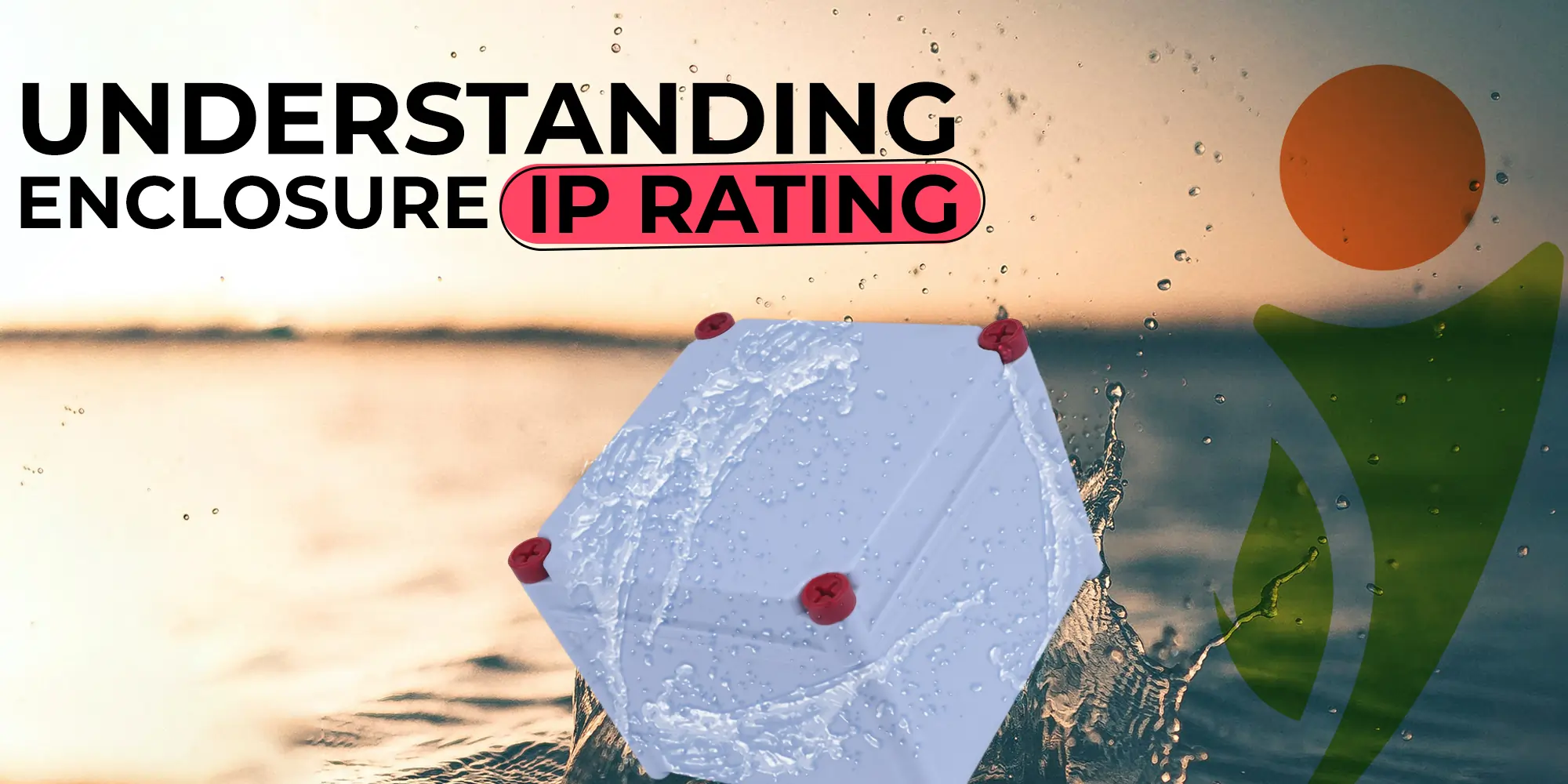
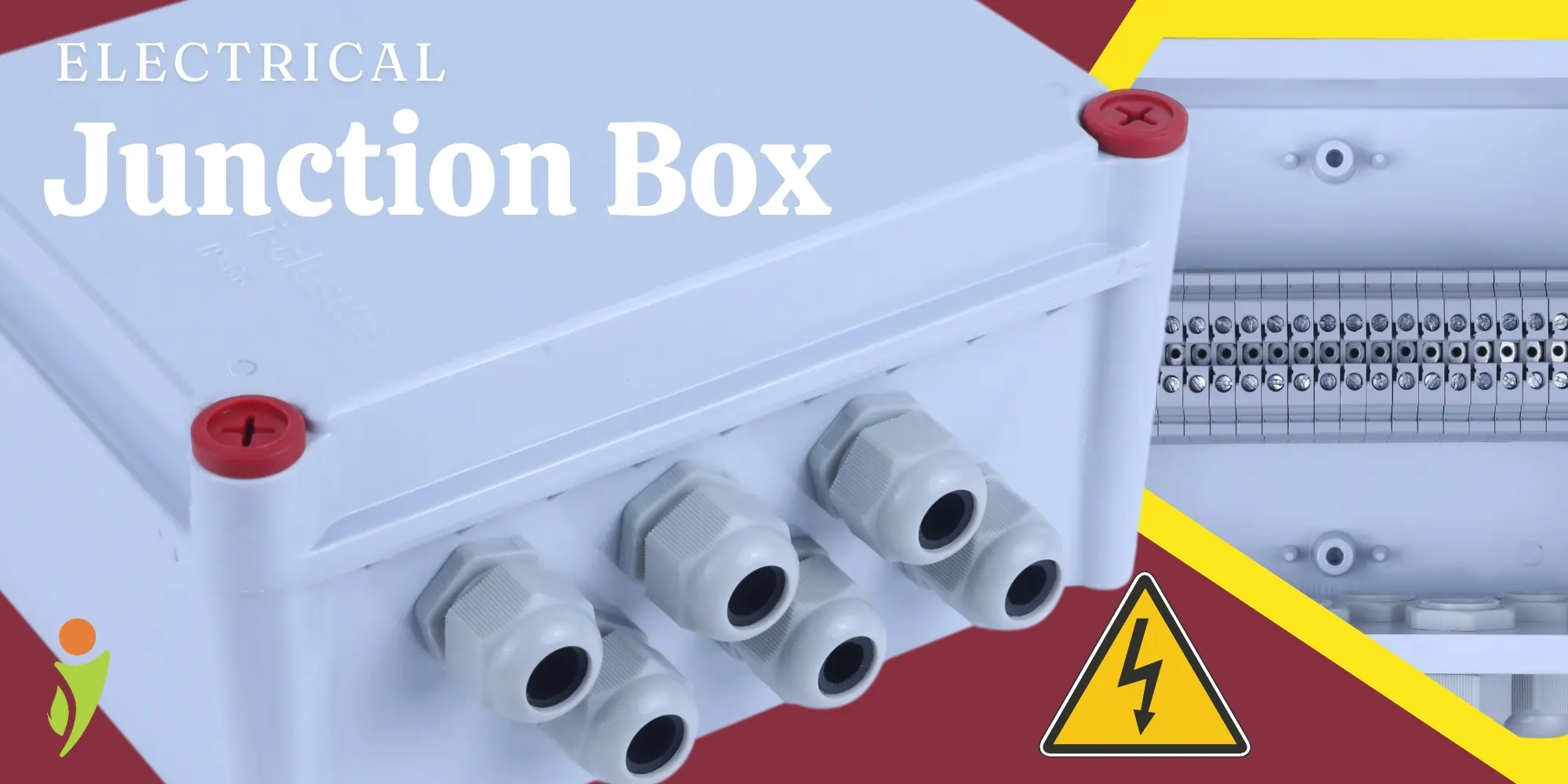
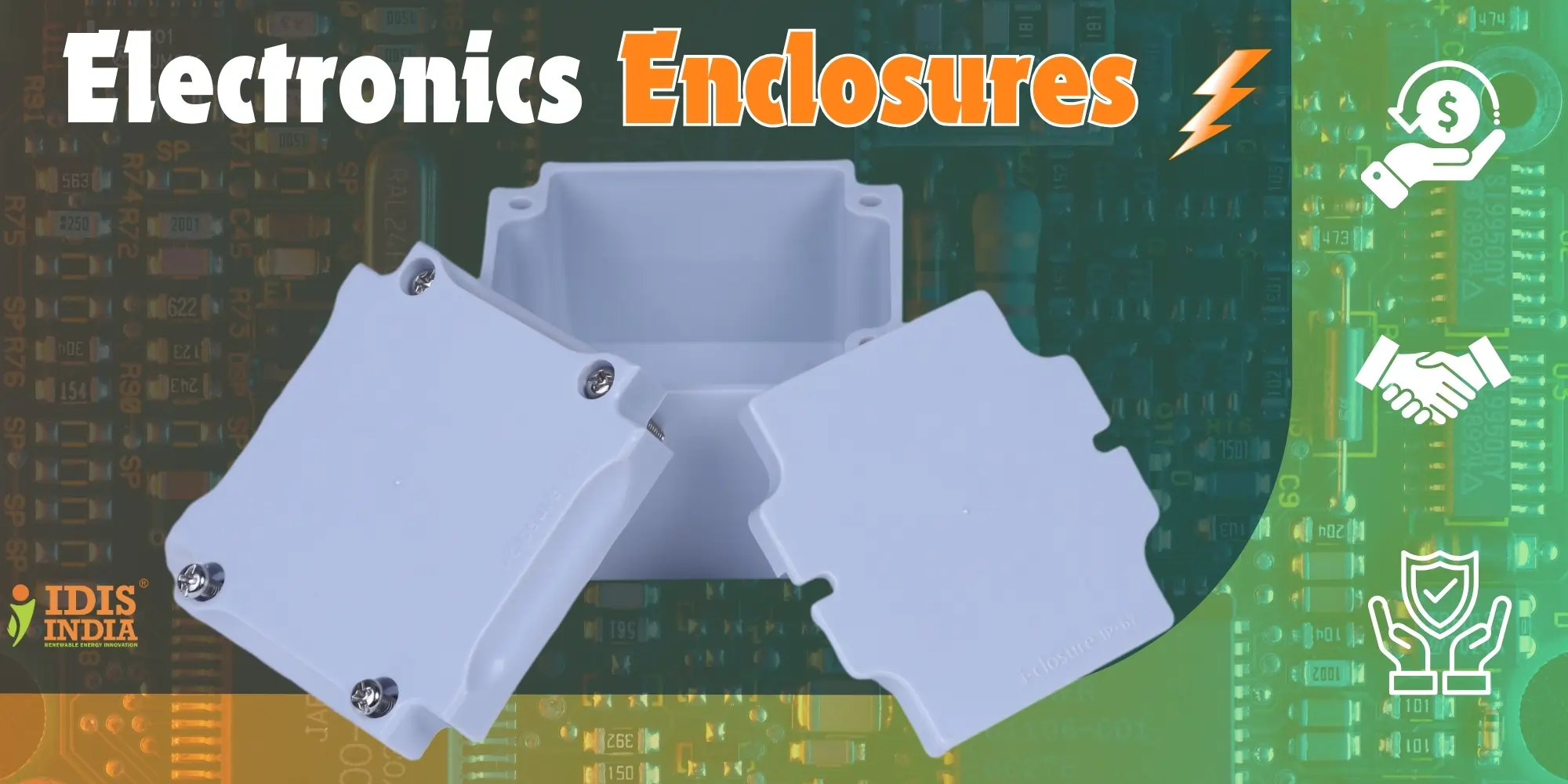

1 Comment
Great to know about IP rating for waterproof products..